Much like the Start menu, the Windows 11 taskbar is no longer popular with many users, mainly because it’s far less customizable than its Windows 10 counterpart.
In Windows 10, you can move the taskbar to any of the four sides of the screen, combine taskbar buttons, change button sizes, and increase the height of the taskbar itself. None of these features are available in Windows 11, at least not in the current version.
But if you want a more robust and user-friendly taskbar in Windows 11, there are several changes you can make. And if that’s not enough, you can try a third-party utility to improve the taskbar. Let’s take a look at the options available to you.
Modify the taskbar
First, you need to go through the different ways to modify the taskbar to look and function according to your preferences. Right-click on an empty area of the taskbar and select Taskbar settings. Here you can remove the icons of some programs you never use, so they don’t take up space. Notably Research, Viewing tasks, widgets and Cat. Turn off the switch for those you don’t want to see:
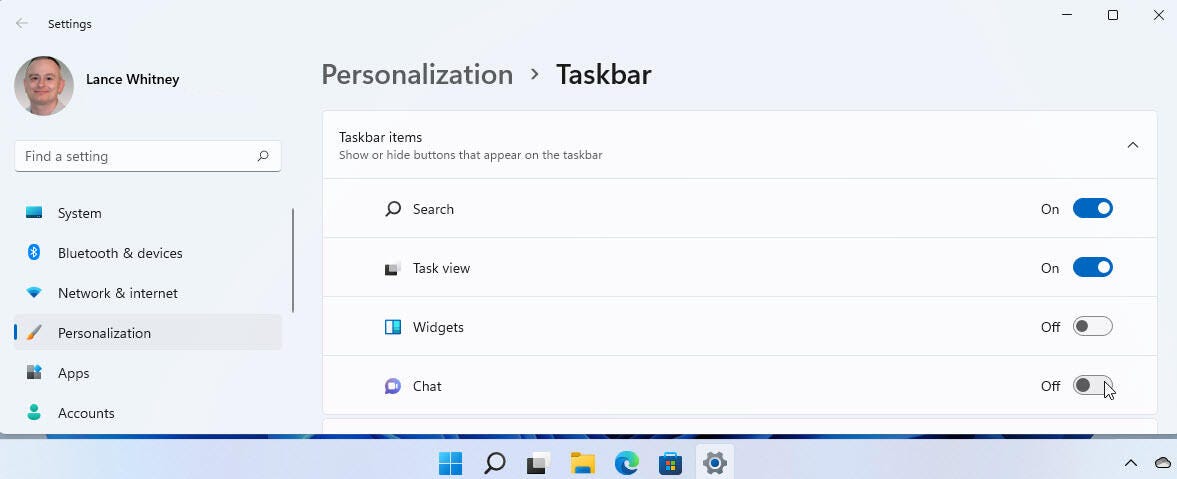
Scroll down the page. The next section lets you add a menu for a pen, touch keyboard, and virtual touchpad to the taskbar. If you’re using a hybrid touchscreen PC without a mouse or keyboard, you can enable these features. Otherwise, leave them disabled:
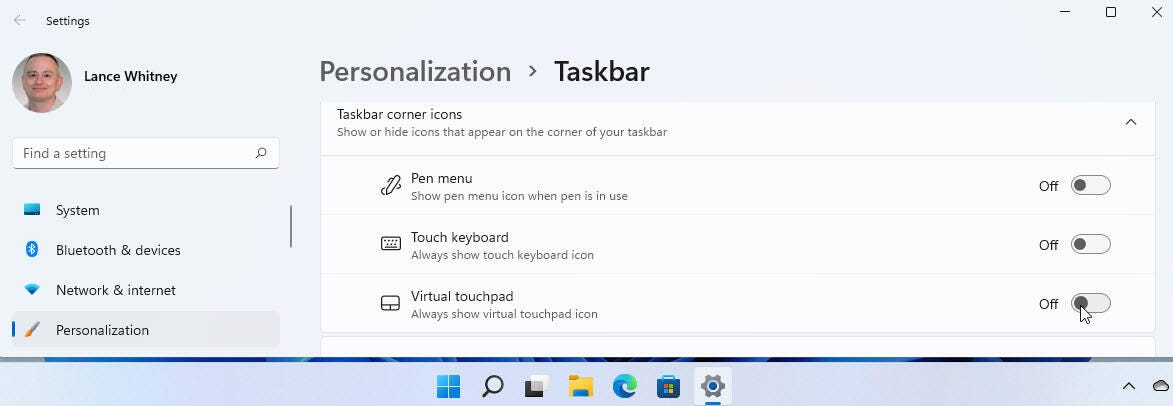
The second item on the list is the system tray, which appears at the right end of the taskbar. Normally, you need to click the up arrow in the system tray to view and access icons for all of your startup programs and other functions. But if there are some that you want to see directly, activate their switches. For example, I like to see the OneDrive icon right in the system tray so I can check file synchronization and other program elements:
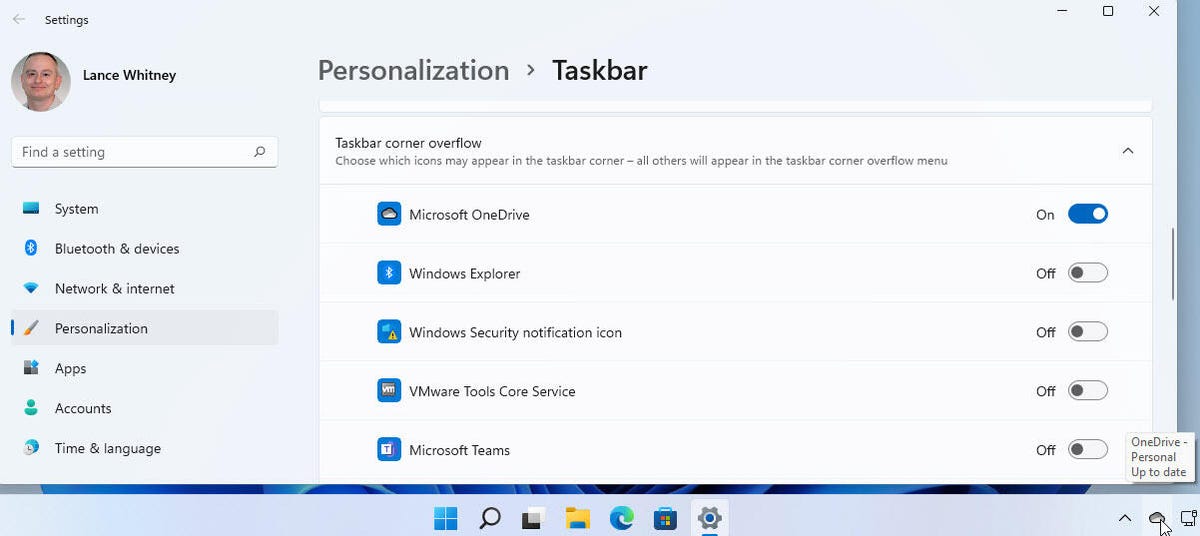
Then you can control taskbar behaviors. I like changing the alignment to the left and auto-hiding the taskbar. These are the two most important settings for me, although I leave the others enabled as well:
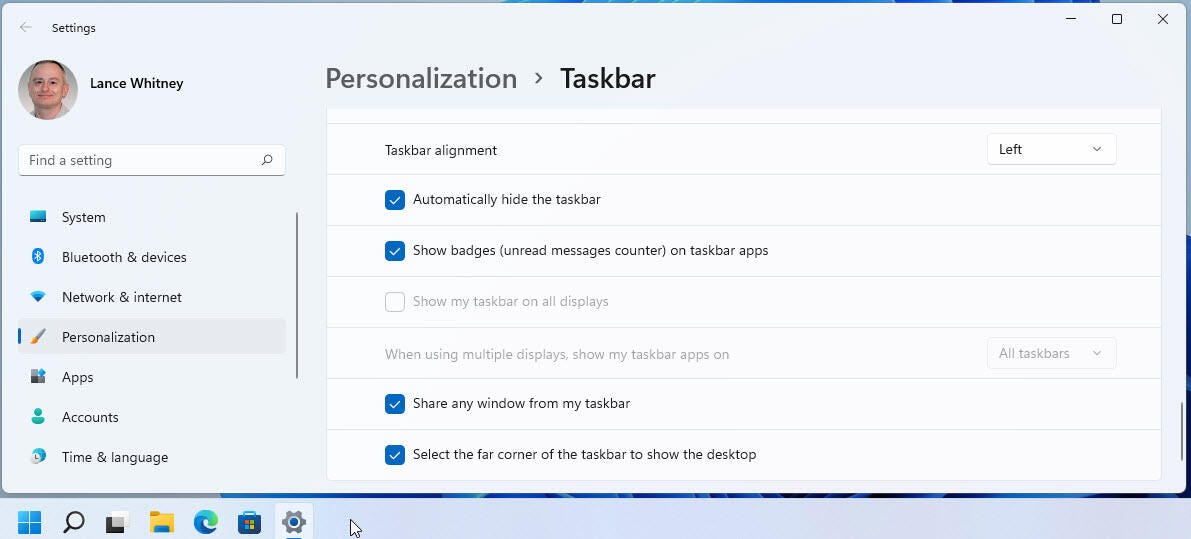
Pin icons to the taskbar
Currently, you can’t drag and drop icons onto the Windows 11 taskbar like you can in Windows 10. But you can pin your favorite programs to the taskbar.
Click the Start button. In the section Pinned appsfind the program you want to add to the taskbar, right-click it and select Pin to taskbar. In the list All Appsright-click the program, go to Morethen select Pin to taskbar. You can then drag and drop the icons onto the taskbar to place them in any order you want:
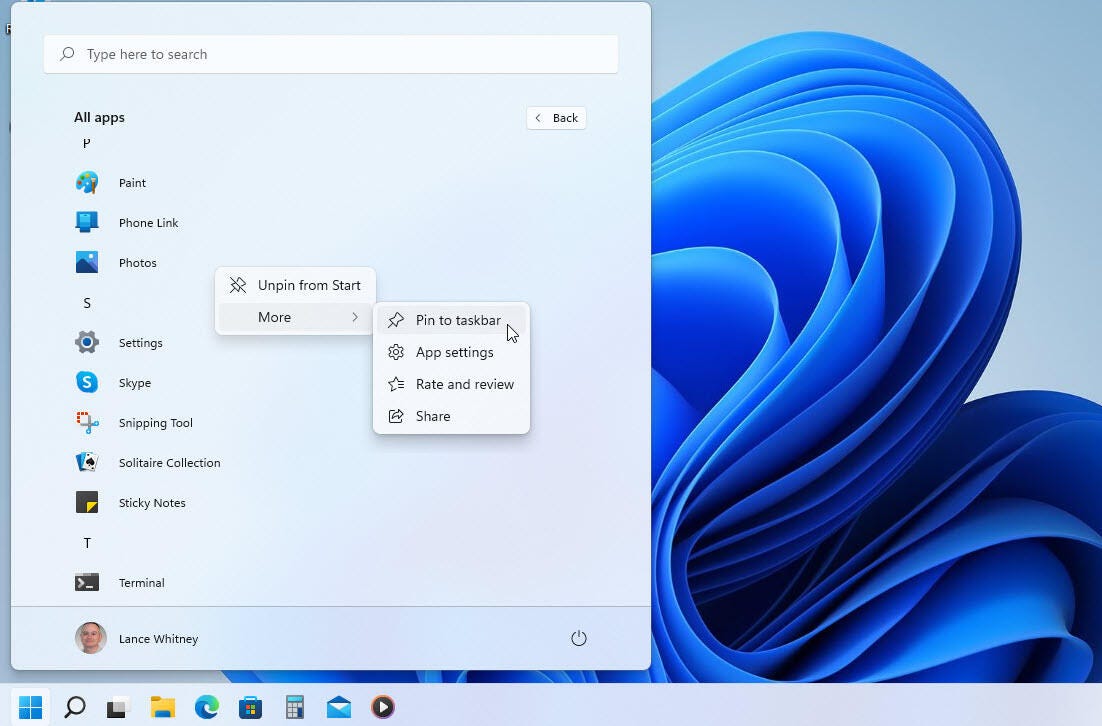
Change the color and appearance of the taskbar
But wait, there’s more you can do with the taskbar, including how it looks. Go into Settings > Personalization > Colors. To make the taskbar translucent against your current desktop background, turn on the transparency effects switch:
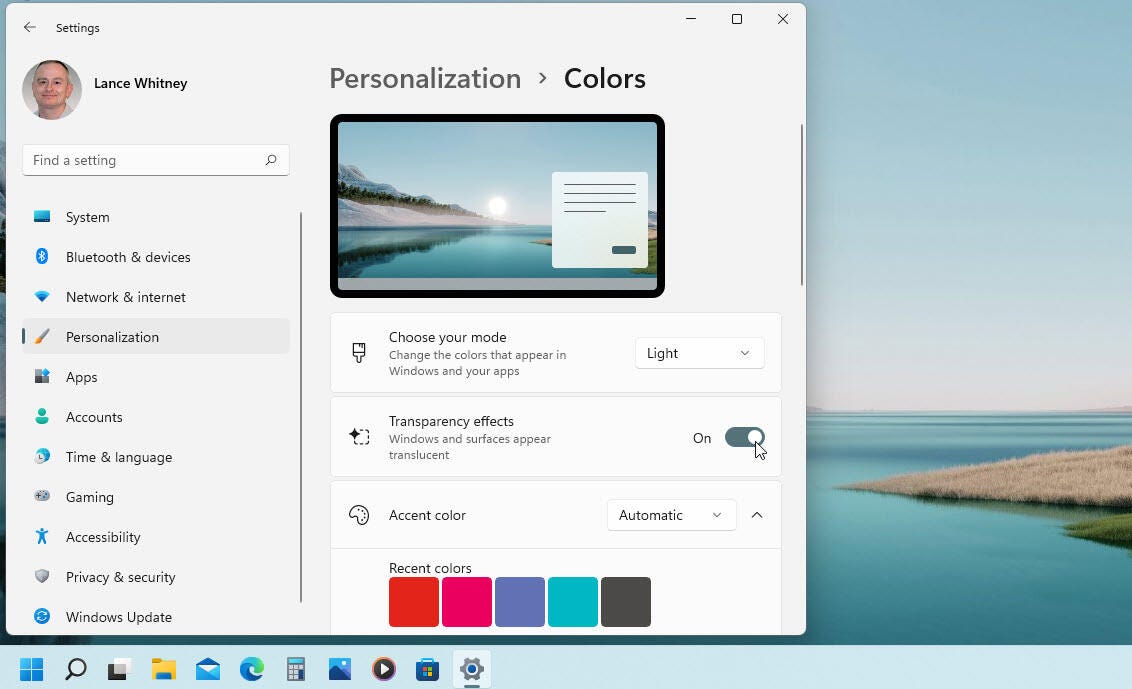
Then you can add accent color to start menu and taskbar. Click the drop-down menu for accent color and change it to manual. Then select your favorite accent color from the palette:
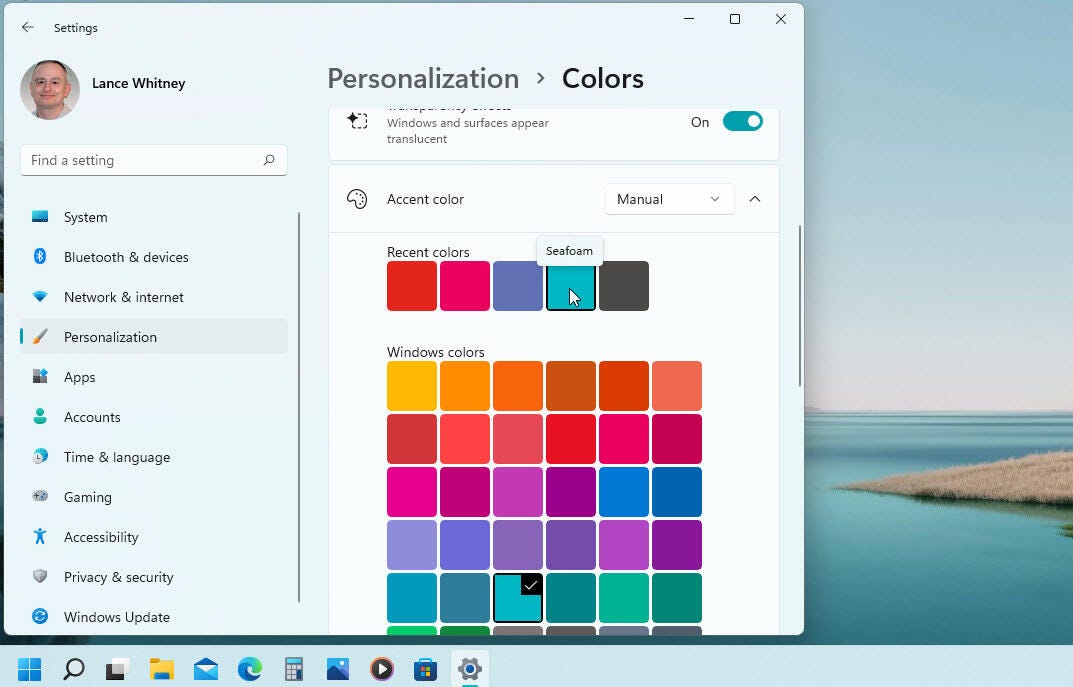
To show only the Start menu, taskbar, and certain items in dark, click the drop-down menu to Choose your mode and change it to Custom. Click on the drop-down menu to Choose your default Windows mode and set it to dark fashion. Leave the setting for Choose your default app mode on Light :
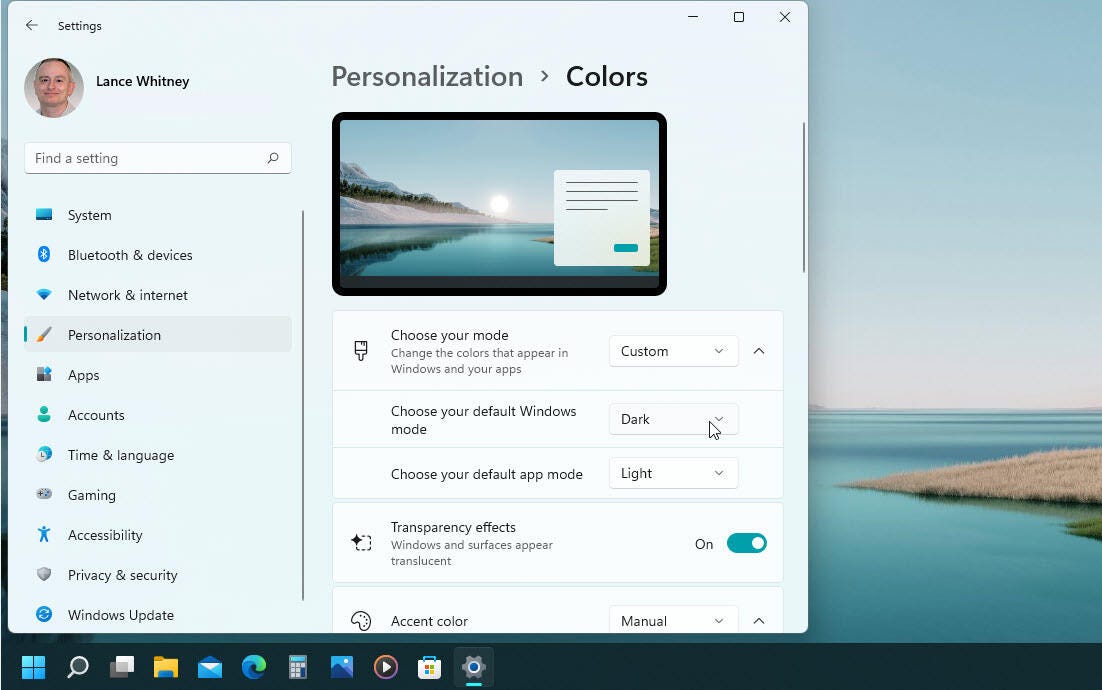
Third Party Adjustments
Some registry hacks claim to modify certain elements of the taskbar, such as its position and height. But they don’t always work reliably or consistently, especially as Microsoft continues to modify Windows 11 to prevent some tricks like this from working. So if you want to do something more drastic on the taskbar beyond its icons and appearance, your best bet is to turn to a third-party utility.
You can change some aspects of the taskbar with two Start menu replacement programs, namely Start11 and StartAllBack, which I discussed in my “How to Replace Your Windows 11 Start Menu With a Third-Party App” column.
Start11 is an application for customizing the start menu of Windows 10 and 11. With it, you can position the menu and the taskbar as you wish, change the color and icons, etc.
- Downloads: 17
- Release date : 05/16/2022
- Author : Stardock
- Licence : Demonstration
- Categories:
Utilities - Operating system : Windows 10/11
Holder of the new Windows 11 operating system, StartAllBack offers you the familiar interface, the Start menu and the taskbar aligned to the left of your Windows 7 or Windows 10.
- Downloads: 4
- Release date : 06/27/2022
- Author : StartCom
- Licence : Demonstration
- Categories:
Personalization - Operating system : Windows 11
But another program I particularly like is ExplorerPatcher, which offers several handy ways to improve the taskbar. To download this free utility, head over to its GitHub page and click the “Download the latest installer” link. After installation, open the program from the menu All Apps.
The first menu option Properties of ExplorerPatcher concerns the taskbar. Here you can change the taskbar style for Windows 10, choose how and when to combine taskbar buttons, change the size of taskbar buttons, and move the taskbar to any side of the screen. After making your changes, click the link Restart File Explorerand the changes take effect:
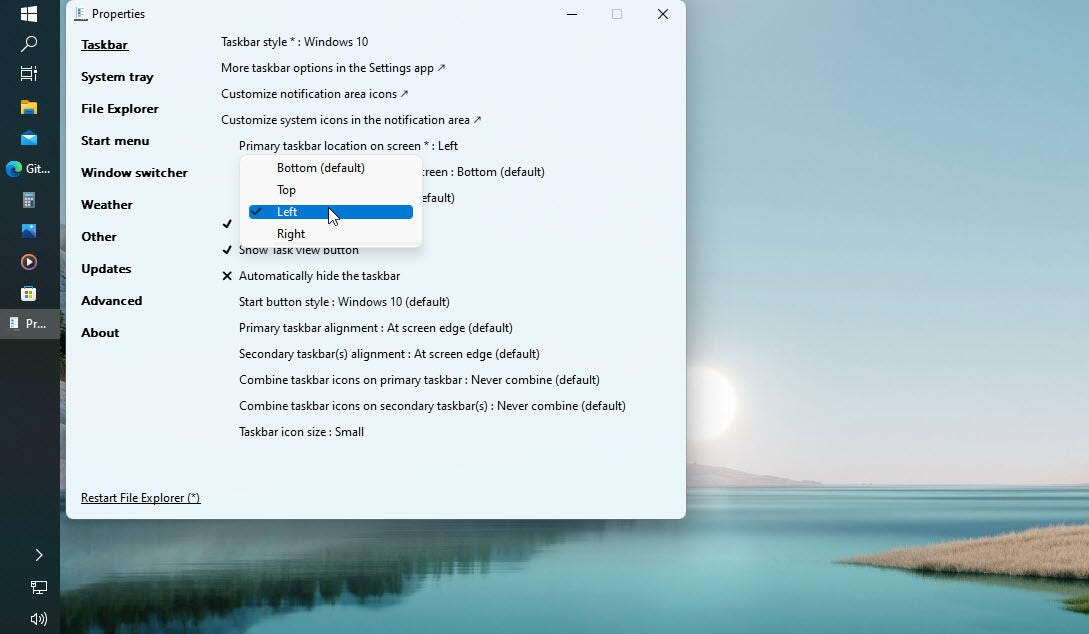
Source: ZDNet.com
